Table Of Contents
Are you considering adding a fence to your landscaping but unsure where to start?
In this guide, Usual House explores the reasons why using fences in landscaping is beneficial, such as providing privacy, security, and protection from wildlife.
We also discuss different types of fences to consider, including wooden, vinyl, metal, and wire options.
We cover important factors to consider when choosing a fence, installation tips, and maintenance and care advice to keep your landscaping fences looking their best. Whether you're looking to enhance your property's aesthetics or create a safe and secure outdoor space, this article has got you covered.
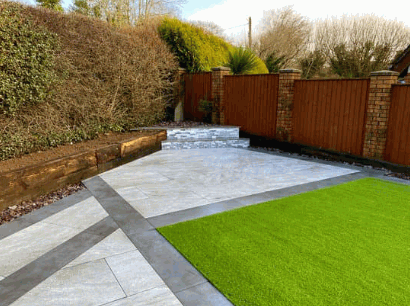
Why Use Fences For Landscaping?
Fences play a pivotal role in landscaping, offering a blend of privacy, security, and aesthetic enhancement to outdoor spaces like backyards and gardens.
They serve as physical barriers that not only keep unwanted intruders out but also provide a sense of seclusion and peace within the outdoor sanctuary.
By defining the property boundaries, fences help create a structured layout for landscaping while adding a layer of elegance to the overall decor.
The sight of lush greenery intertwined with the backdrop of a well-designed fence can evoke a feeling of harmony and relaxation, making the outdoor area a true haven for unwinding and enjoying nature's beauty.
Privacy And Security
Fences are essential for ensuring privacy, security, and safety by clearly delineating property boundaries, containing pets, and creating a secure environment.
By establishing physical boundaries, fences play a crucial role in defining personal space and preventing unauthorized access to one's property. In addition to keeping pets safely contained within the confines of the yard, fences act as a barrier to deter intruders and trespassers, thereby boosting the overall safety of the premises. For families with children, fences serve as a protective shield, granting parents peace of mind by creating a secure outdoor space where kids can play freely without the risk of wandering off or encountering potential hazards.
Aesthetics And Curb Appeal
Fences significantly enhance the aesthetics and curb appeal of a property, serving as decorative features that blend seamlessly with outdoor decor and natural elements.
They not only provide a sense of structure and privacy but also contribute to the overall design harmony of the outdoor space. By choosing the right style and material for a fence, homeowners can create a unified look that complements the existing landscaping and exterior features. Incorporating elements like climbing vines or colorful flowers along the fence can further elevate the visual appeal of the property, adding a touch of natural beauty and charm to the surroundings. Well-designed fences can define boundaries while also enhancing the overall ambiance of the outdoor area.
Protection From Wildlife
Fences act as protective barriers, safeguarding gardens and outdoor spaces from wildlife intrusion, and ensuring the safety of plants and landscapes such as hedges, shrubs, and flowers.
These structures play a crucial role in deterring animals like rabbits, deer, and rodents from causing extensive damage to cherished plantings. By creating a physical boundary, fences help maintain the integrity of outdoor areas, providing a sense of security and peace of mind for garden enthusiasts. They serve as a visual boundary, enhancing the aesthetic appeal of the landscape by defining distinct areas and highlighting the beauty of the surrounding greenery.
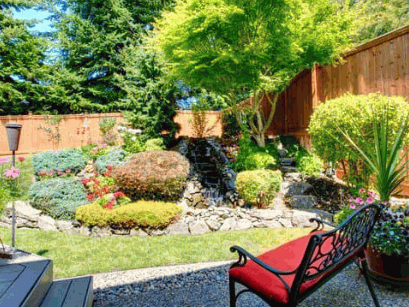
Types Of Fences For Landscaping
Various types of fences are available for landscaping, including wooden fences, vinyl fences, metal fences, and wire fences, each offering unique benefits and design options.
Wooden fences are favored for their classic and natural appearance, enhancing the rustic charm of a garden or property. They can be stained or painted to match different styles, offering versatility in design.
Vinyl fences, on the other hand, are low maintenance and durable, available in various colors and styles to complement modern or traditional settings.
Metal fences are known for their strength and security, coming in ornate designs for a sophisticated look.
Wire fences, such as chain-link or mesh, provide a cost-effective option for boundary marking and are easily customizable.
Wooden Fences
Wooden fences are popular for their durability and natural appeal, complementing outdoor spaces with a classic look that can be enhanced through staining and regular maintenance.
Their longevity is one of the key features that make them a preferred choice for many homeowners who seek a fence that can withstand the test of time. With proper care, such as regular staining to protect against weathering and repairs to address any damage, wooden fences can last for decades. Beyond their practicality, these fences also offer a timeless aesthetic that effortlessly blends with various outdoor landscapes, adding a touch of warmth and traditional charm to any property.
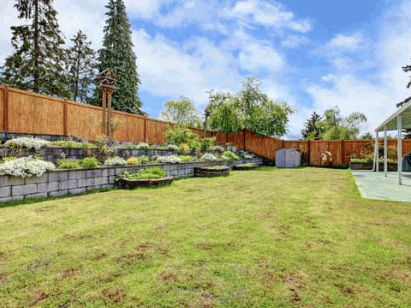
Vinyl Fences
Vinyl fences are a popular choice for landscaping due to their easy installation, maintenance-free nature, and eco-friendly composition that offers a sustainable fencing solution.
Their low maintenance requirements make them an ideal solution for homeowners looking to enhance their outdoor space without the hassle of constant upkeep. Vinyl fences are known for their durability, ability to withstand harsh weather conditions and resist fading, rotting, or warping. Their environmental friendliness makes them a standout choice for those wanting to prioritize sustainability in their landscaping projects.
What sets vinyl fences apart is the ease of installation, allowing for a quick and efficient set-up that minimizes disruptions. Replacement options for vinyl fences are also readily available, providing flexibility for homeowners to refresh or change their fencing without significant hassle, contributing to sustainable landscaping practices.
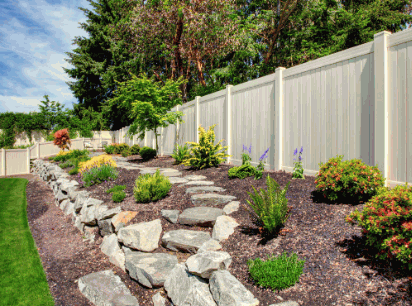
Metal Fences
Metal fences provide a blend of style and functionality, offering weather-resistant properties, security features, and customizable design options such as gates for enhanced accessibility.
In landscaping, the versatility of metal fences shines through, their durability and strength making them a popular choice for homeowners and commercial properties alike. With various styles available, from classic wrought iron to modern sleek designs, these fences can complement any architectural style.
One of the key benefits is the low maintenance required, as metal fences only need occasional cleaning to maintain their appearance. The inclusion of gates not only adds a decorative element but also serves a practical purpose, providing added security and privacy to the property."
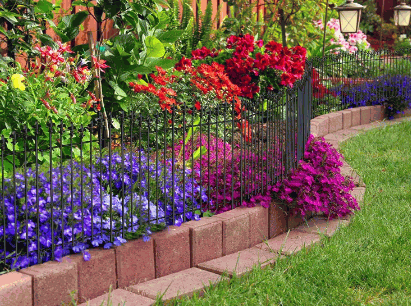
Wire Fences
Wire fences offer practical solutions for landscaping, serving as effective barriers that can provide privacy, windbreak, noise reduction, and customizable height options based on the desired functionality.
These versatile wire fences are commonly used to create privacy screens in outdoor spaces, such as garden boundaries or around swimming pools, allowing individuals to enjoy their personal spaces without unwanted intrusion. Wire fences can serve as efficient windbreaks, helping to protect plants and structures from strong winds, thereby promoting a healthier and more stable environment. By carefully selecting the appropriate fence heights, these structures can effectively block unwanted views, reduce noise levels, and enhance the overall aesthetics of a landscape.
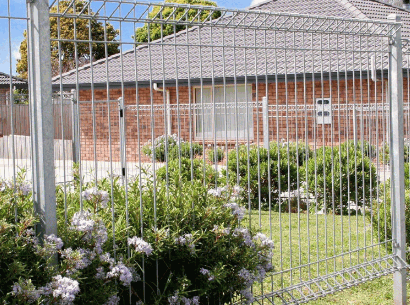
Factors To Consider When Choosing A Fence For Landscaping
Several critical factors should be considered when selecting a fence for landscaping, including budget constraints, intended purpose, maintenance needs, and compliance with local regulations and restrictions.
Budget constraints play a significant role in choosing the right fence for your landscaping needs. It's essential to determine how much you are willing to invest in your fence project, as this will guide your options.
From there, you must evaluate the intended purpose of the fence - whether it is for security, privacy, aesthetic appeal, or a combination of these. Maintenance preferences also matter; some materials may require more upkeep than others.
Local regulations regarding fence height, material, and location should not be overlooked to avoid any future issues.
Budget
Budget considerations play a crucial role in selecting a fence for landscaping, as they impact the overall cost, long-term maintenance, and the choice of budget-friendly yet durable solutions.
It is essential to find a balance between initial expenses and future upkeep when deciding on a fence that fits within your financial constraints.
Opting for cost-effective materials like vinyl or chain-link fences can offer a durable and low-maintenance solution that is both affordable and long-lasting.
By carefully evaluating the upfront investment against the potential savings in maintenance and repair costs over time, homeowners can make a smart choice that not only enhances their property but also aligns with their budgetary considerations.
Discover: How Much Does Glass Pool Fencing Cost
Purpose Of The Fence
Determining the purpose of the fence is essential when landscaping, as it can add value to the property, enhance aesthetics, improve safety, and serve functional roles like pet containment.
When strategically aligned with landscaping goals, a fence can truly transform the outdoor space. A well-designed fence not only delineates boundaries but also complements the overall design of the landscape. By integrating the right materials and style, a fence can become a focal point, enhancing the visual appeal of the property. Fences provide a sense of security and privacy, creating a safe environment for families and pets to enjoy.
For pet owners, a properly installed fence offers peace of mind by containing their furry companions within the designated area.
Maintenance Requirements
Understanding the maintenance needs of a fence is crucial for its longevity and appearance, involving tasks like staining, painting, and protection against weather elements and pests.
- Regular care for wooden fences typically includes staining or painting every few years to help preserve the wood and protect it from moisture damage. Applying a weatherproof sealant can help shield the wood from the sun's UV rays and prevent warping or cracking.
- For metal fences, rust prevention is key to maintaining their integrity, often requiring periodic inspections and touch-ups with rust-resistant paint.
- Vinyl fences are relatively low-maintenance but benefit from occasional cleaning to remove dirt and grime.
Investing time and effort in proper maintenance can significantly prolong the lifespan and enhance the curb appeal of your fencing.
Local Regulations And Restrictions
Compliance with local regulations and restrictions is paramount when installing a fence for landscaping, necessitating adherence to fence permit requirements, height regulations, and neighborhood guidelines.
This approach ensures that your fence project not only aligns with legal standards but also respects the aesthetics and rules of your community. Obtaining the necessary permits helps streamline the process, avoiding potential fines, delays, or issues in the future. By following height restrictions, you maintain the safety and privacy aspects of the fence while blending harmoniously with the surroundings. Conforming to neighborhood guidelines fosters good relationships with neighbors and upholds the overall visual appeal of the area.
Installation Tips For Landscaping Fences
Proper installation is key to the success of landscaping fences, requiring careful consideration of DIY options, professional installation services, and adherence to a systematic installation process.
Professionals say that one of the primary benefits of opting for a professional installation service for your landscaping fence is the expertise and precision that professionals bring to the project. Professional installers have the knowledge and experience to assess the specific needs of your landscape, recommend the most suitable fence materials, and ensure that the fence is erected with structural stability.
On the other hand, DIY installations can be a cost-effective option, allowing homeowners to save on labor costs. It's important to note that DIY installations may require more time and effort, as well as a steep learning curve for those unfamiliar with fence construction.
Regardless of the approach chosen, ensuring proper measurements, secure anchoring, and regular maintenance are essential to the long-term success of your landscaping fence.
Properly Measure And Mark The Fence Line
Accurate measurement and marking of the fence line are crucial steps in landscaping projects, ensuring precise alignment with the property boundary and customization based on landscaping needs.
- By meticulously measuring the designated area, individuals can avoid costly mistakes and potential property boundary disputes. Utilizing tools like measuring tapes, laser levels, and marking paint can facilitate accurate measurements.
- Incorporating techniques such as triangulation and string lines aids in ensuring straight fence lines and consistent height levels. Customization requirements, such as accommodating sloped terrain or existing landscaping features, also necessitate precise measurements to achieve a tailored and visually appealing fence design.
- Proper planning through precise measurement and marking ultimately results in a durable and aesthetically pleasing fence installation.
Choose The Right Materials And Tools
Selecting the right materials and tools is essential for landscaping fences, ensuring durability, customization options, and a personalized touch that enhances the overall design.
Durability is a key factor to consider when constructing a fence as it directly impacts the longevity of the structure. Choosing sturdy materials such as treated wood, vinyl, or metal can ensure that the fence withstands environmental elements and regular wear and tear.
The customization features available with different materials allow homeowners to tailor the fence to their specific needs and style preferences, whether opting for a traditional look or a more modern aesthetic. By selecting the appropriate materials, individuals can create a fence that not only serves its practical function but also adds to the overall beauty and curb appeal of their property.
Follow Safety Precautions
Prioritizing safety precautions during fence installations is paramount, especially in DIY projects, where adherence to safety measures and the use of protective gear are crucial for injury prevention.
One of the key safety hazards to be mindful of when embarking on a fence installation project is the risk of cuts and punctures from sharp tools and materials. Wearing appropriate protective gear such as heavy-duty gloves, safety goggles, and sturdy footwear can significantly reduce the likelihood of such injuries.
Ensuring that the work area is clear of obstacles and debris can help prevent trips and falls, which are common risks during construction projects. Taking the time to plan out the installation process step by step and double-checking measurements can also minimize errors and the need for risky improvisations.
Maintenance And Care For Landscaping Fences
Routine maintenance and care are essential for preserving the integrity and appearance of landscaping fences, involving regular cleaning, inspections, and timely repairs to combat weather-related wear and tear.
Ongoing maintenance practices play a crucial role in not only enhancing the aesthetics of your outdoor space but also in ensuring the longevity and functionality of your fencing.
By conducting regular cleaning sessions, you can prevent the buildup of dirt, mold, and grime that can damage the material and compromise its strength.
Inspections help in identifying any weak spots or signs of deterioration early on, allowing you to take immediate action to address them before they escalate.
Timely repairs are imperative to combat weather-related damage, such as rotting due to excessive moisture or warping caused by prolonged exposure to the sun.
Regular Cleaning And Inspection
Regular cleaning and inspection routines are crucial for maintaining the appearance and functionality of landscaping fences, promoting a well-kept outdoor space and optimal performance with low maintenance options.
By incorporating regular cleaning and inspections into your routine, you can prevent the build-up of dirt, grime, and other debris that can detract from the beauty of your landscaping. These tasks are not solely about aesthetics; they play a vital role in ensuring that your fence remains structurally sound over time. Opting for low-maintenance solutions such as using durable materials or applying protective coatings can simplify upkeep tasks and enhance the longevity of your fence. Consistent care will not only preserve the charm of your outdoor area but also contribute to the overall value of your property.
Repairs And Replacements
Timely repairs and replacements are essential for addressing wear and tear issues in landscaping fences, requiring attention to fence repair techniques and the selection of durable materials for long-lasting solutions.
- Regular maintenance of landscaping fences is crucial to ensure they remain not only aesthetically pleasing but also structurally sound.
- By opting for high-quality materials such as pressure-treated wood, vinyl, or metal, you can enhance the resilience of your fences against weather elements and potential damage.
- Employing proper installation techniques and periodic inspections can help identify early signs of deterioration, allowing for timely interventions to prevent larger issues down the line.
- These proactive measures not only extend the lifespan of your fences but also contribute to maintaining the overall appeal of your outdoor space.
Protecting Against Weather And Pests
Safeguarding landscaping fences against weather elements and pests is essential for their longevity and performance, involving protective measures like staining for weather resistance and garden protection against pests.
Applying weather-resistant treatments such as sealants can create a barrier against moisture infiltration, preventing rot and decay in the fence materials.
Regular inspections and maintenance, including replacing damaged boards promptly, can deter pest nesting and infestations that may compromise the structural integrity of the fence.
Employing natural pest control methods like planting pest-repelling plants around the perimeter of the garden can act as a preventive measure, reducing the likelihood of invasive insects damaging the fence or surrounding greenery.


